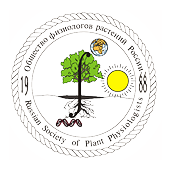Новости науки и практики // Август 2020

Regulation of root adaptive anatomical and morphological traits during low soil oxygen
Flooding causes oxygen deprivation in soils. Plants adapt to low soil oxygen availability by changes in root morphology, anatomy, and architecture to maintain root system functioning. Essential traits include aerenchyma formation, a barrier to radial oxygen loss, and outgrowth of adventitious roots into the soil or the floodwater. Pedersen et al. highlight recent findings of mechanisms of constitutive aerenchyma formation and of changes in root architecture.
https://nph.onlinelibrary.
Friendly regulates membrane depolarization induced mitophagy in Arabidopsis
Using time-lapse imaging, electron tomography and biochemical assays, Ma et al. show that uncoupler treatments cause loss of mitochondrial membrane potential and induce autophagy in Arabidopsis. The damaged mitochondria are selectively engulfed by autophagosomes that are ATG5 dependent and labelled by ATG8 proteins. Friendly, a member of the Clustered Mitochondria protein family, is recruited to the damaged mitochondria to mediate mitophagy. In addition to stress, mitophagy is also induced during de-etiolation, a major cellular transformation during photomorphogenesis that involves chloroplast biogenesis. De-etiolation triggered mitophagy regulates cotyledon greening, pointing towards an inter-organellar cross-talk mechanism.
https://www.biorxiv.org/
Understanding the connections between plant hormones and cellulose synthesis in plants: still a great unknown!
Wang and colleagues review the relationships between key phytohormone classes and cellulose deposition in plant systems.
https://www.botany.one/2020/
Plant secondary metabolites as defenses, regulators, and primary metabolites: the blurred functional trichotomy
Recent work unveils the limits of our current functional classification system for plant metabolites. Viewing secondary metabolites as integrated components of metabolic networks that are dynamically shaped by environmental selection pressures and transcend multiple trophic levels can improve our understanding of plant metabolism and plant–environment interactions.
http://www.plantphysiol.org/
Cytoskeletal organization in isolated plant cells under geometry control
The cytoskeleton, a network of polymers including microtubules and actin, supports many functions in cells. In plants, the cytoskeleton orientation is an important parameter dictating the direction of cell growth. While light, hormonal, or mechanical signals can affect the cytoskeleton organization, the role of cell geometry remains to be clarified. With a microwell-based approach, Durand-Smet et al. confined plant cells lacking walls in different geometries and found that the cytoskeletons align with the long axis in cells in rectangular wells. Basic geometrical rules of the microtubules are computationally modeled in three dimensions and reveal the role of severing proteins in the shape response, which was observed experimentally. These findings demonstrate how cell geometry feeds back on cytoskeletal organization in plant cells.
https://www.pnas.org/content/
The fungal collaboration gradient dominates the root economics space in plants
Plant economics run on carbon and nutrients instead of money. Leaf strategies aboveground span an economic spectrum from “live fast and die young” to “slow and steady,” but the economy defined by root strategies belowground remains unclear. Bergmann et al. take a holistic view of the belowground economy and show that root-mycorrhizal collaboration can short circuit a one-dimensional economic spectrum, providing an entire space of economic possibilities.
https://advances.sciencemag.
Metalheads! Patterns of extreme mineral accumulation in plants
Examining patterns of mineral accumulation in plants gives clues as to how some plants can accumulate extreme amounts of some minerals.
https://www.botany.one/2020/
Thicker roots: to grow or not to grow? Investigating the dynamics of secondary root growth
Secondary growth of the roots of annual dicots has functional significance with regards to soil resource acquisition and transport, interactions with soil organisms and carbon sequestration.
https://www.botany.one/2020/
How does barley make vitamin E?
Vitamin E is increasingly understood to be important for human health. An international team has been editing the barley genome to understand the genetic controls for the vitamin’s creation by the cereal.
https://www.botany.one/2020/
New study resolves mystery surrounding unique light-harvesting structures in algae
Scientists reveals the structural details of proteins involved in the photosynthetic process of an aquatic microorganism
https://www.eurekalert.org/
GDSL-domain containing proteins mediate suberin biosynthesis and degradation, enabling developmental plasticity of the endodermis during lateral root emergence
Ursache et al. show that differentiated endodermal cells have a distinct auxin-mediated transcriptional response that regulates cell wall remodelling. Based on this data set they identify a set of GDSL-lipases that are essential for suberin formation. Moreover, they find that another set of GDSL-lipases mediates suberin degradation, which enables the developmental plasticity of the endodermis required for normal lateral root emergence.
https://www.biorxiv.org/
Extracellular proteolytic cascade in tomato activates immune protease Rcr3
The secretion of papain-like cysteine proteases (PLCPs) is an important component of the immune response across the plant kingdom. Paulus et al. show that immune protease Rcr3, a secreted PLCP of tomato, is activated by secreted subtilisins, which are common serine proteases in plants.
https://www.pnas.org/content/
CDKD-dependent activation of CDKA;1 controls microtubule dynamics and cytokinesis during meiosis
Sofroni et al. reveal that the central cell cycle regulator CYCLIN DEPENDENT KINASE A;1 (CDKA;1), the Arabidopsis homologue of Cdk1 and Cdk2, partially in conjunction with CYCLIN B3;1 (CYCB3;1), is a key regulator of the microtubule cytoskeleton in meiosis. For full CDKA;1 activity, the function of three redundantly acting CDK-activating kinases (CAKs), CDKD;1, CDKD;2, and CDKD;3, is necessary. Progressive loss of these genes in combination with a weak loss-of-function mutant in CDKA;1 allowed a fine-grained dissection of the requirement of cell-cycle kinase activity for meiosis. Notably, a moderate reduction of CDKA;1 activity converts the simultaneous cytokinesis in Arabidopsis, i.e., one cytokinesis separating all four meiotic products concurrently into two successive cytokineses with cell wall formation after the first and second meiotic division, as found in many monocotyledonous species.
https://rupress.org/jcb/
The amazing travels of small RNAs
In most organisms, small bits of RNA play a key role in gene regulation by silencing gene expression. They do this by targeting and docking onto complementary sequences of gene transcripts (also RNA molecules), which stops the cell machinery from using them to make proteins. This mechanism is called RNA interference (RNAi), and it is critically important in biology.
https://www.eurekalert.org/
Pesticides can protect crops from hydrophobic pollutants
Effectiveness demonstrated in the Cucurbitaceae family.
https://www.eurekalert.org/
Desert algae shed light on desiccation tolerance in green plants
Microscopic green algae live are extraordinarily tolerant of dehydration. These tiny green algae (many just a few microns in size) live embedded in microbiotic soil crusts, which are characteristic of arid areas and are formed by communities of bacteria, lichens, microalgae, fungi, and even small mosses. After completely drying out, the algae can become active and start photosynthesizing again within seconds of receiving a drop of water.
https://www.eurekalert.org/
У регенерации растений прояснили молекулярный механизм
Чтобы залечить повреждения, растения используют гормон ауксин и специальный белок, управляющий делением клеток.
https://www.nkj.ru/news/39105/
Novel 'on-off' switch discovered in plant defenses
Protective mechanism paves the way to improved plant disease resistance and food stability.
https://www.eurekalert.org/
New study shows how plants regulate their growth-inhibiting hormones to survive
In a study a team of scientists has discovered, using rice plants as the study model, that a process called "allosteric regulation" is involved in maintaining the phytohormonal balance in plants.
https://www.eurekalert.org/
To quench or not to quench: Understanding the role of a cyanobacterial photosystem protein
Scientists define the role of a cyanobacterial protein in photosynthetic energy transfer process.
https://www.eurekalert.org/
Как растения узнают о конце зимы
К концу холодов в растениях накапливается достаточно нужных белков, помогающих расцвести.
https://www.nkj.ru/news/39153/
Супергены помогают подсолнухам выживать
Умение подсолнечников приспосабливаться к сложным условиям среды зависит от больших генетических комплексов, превосходящих по размеру человеческие хромосомы.
https://www.nkj.ru/news/39115/
Slow growth the key to long term cold sensing
In this study groups of Professor Dame Caroline Dean and Professor Martin Howard at John Innes Centre show that slow growth is used as a signal to sense long-term changes in temperature.
https://www.eurekalert.org/
Massive haplotypes underlie ecotypic differentiation in sunflowers
Species often include multiple ecotypes that are adapted to different environments. However, it is unclear how ecotypes arise and how their distinctive combinations of adaptive alleles are maintained despite hybridization with non-adapted populations. Here, by resequencing 1,506 wild sunflowers from 3 species (Helianthus annuus, Helianthus petiolaris and Helianthus argophyllus), Todesco and colleagues identify 37 large (1–100 Mbp in size), non-recombining haplotype blocks that are associated with numerous ecologically relevant traits, as well as soil and climate characteristics.
https://www.nature.com/
Root architecture and hydraulics converge for acclimation to changing water availability
While the mechanisms that directly underlie root growth and development as well as tissue hydraulics are being uncovered, the signalling mechanisms that govern their local and systemic adjustments as a function of water availability remain largely unknown. A comprehensive understanding of root architecture and hydraulics as a whole (in other terms, root hydraulic architecture) is needed to apprehend the strategies used by plants to optimize water uptake and possibly improve crops regarding this crucial trait.
https://www.nature.com/
Новости
Новости науки и практики // Апрель 2024
Обзор научных новостей, опубликованных во всемирной паутине за последний месяцФосфорилирование плазматической мембраны H+-АТФазы Thr881 (треонин) участвует в светоиндуцированном открывании устьиц
Ученые из Университета Нагои (Nagoya University) и Института трансформирующих биомолекул (WPI-ITbM) обнаружили новый ...Научная конференция «Photosynthesis and Hydrogen Energy Research for Sustainability – 2024»
Приглашаем Вас принять участие в XII международной научной конференции


Объявления
Записей не найдено.



